Physical Address
304 North Cardinal St.
Dorchester Center, MA 02124
The amazing facts of the world
The amazing facts of the world
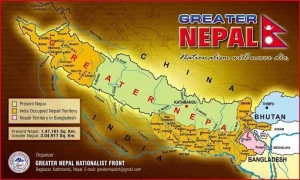
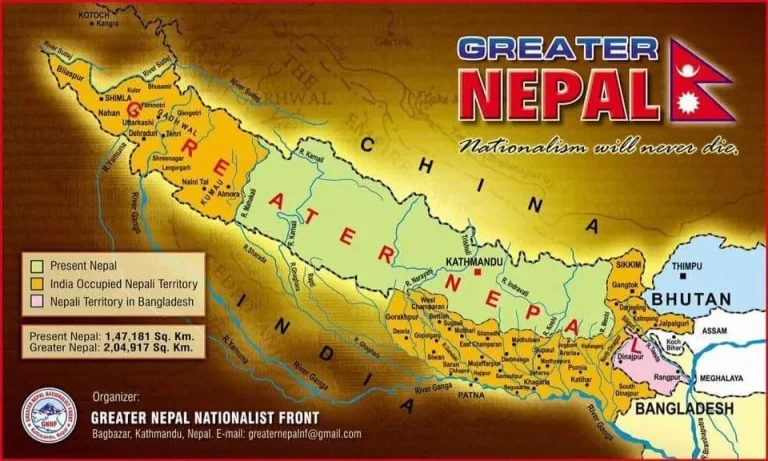
Greater Nepal refers to the areas under Nepal’s control before 208 years. In other words, the area that was a subordinate area of Nepal before the Sugauli Treaty of 1816 was Greater Nepal.
After the Sugauli Treaty between the British East India Company (EIC) and Nepal, Nepal had to lose more than 100,000 square kilometres of its occupied area, which is now under India’s control.
The claim or argument of the campaigners demanding Greater Nepal is that Nepal had not signed the Sugauli Treaty with India. This treaty was made with the then-British East India Company. Since then, no country or government has named ‘Bharat’.
At that time, the Indian peninsula was a colony of Britain. And the East India Company had its regime at this place. In 1947, the British government left India forever. And this vast Indian peninsula became independent.
When the British colony ended in this peninsula, three countries were born: India, Pakistan, and Bangladesh.
Ultimately, the land of this peninsula was reorganized, and the claimants of the three countries got their own claimed land or countries.
However, Nepal did not regain the land it lost with British colonialism. The area, which at that time was a small country, Nepal, was forced to cede to the massive British Empire under the Sugauli Treaty.

It is said that the Indian rulers got their land or kingdom back. Similarly, Bengalis got Bangladesh, and Muslims got Pakistan, so why did Nepal not get back its lost land? These are their arguments or questions.
Its claimants say we have nothing to do with India on this issue. This is only a matter of agreement with the British Raj. If there is no British Raj here, why would Nepal continue to follow the contract signed with the British Raj (EIC) alone?
Therefore, campaigners for Greater Nepal say that the land lost should be returned to Nepal through the Sugauli Treaty.
But India does not seem ready to listen to all this. However, this issue has occasionally been debated within Nepal and in the international Nepali-speaking community. This topic has also been sensationalized in the media in various ways.
Among the Nepali political parties, the Maoist Party of Nepal had given a strong slogan during the People’s War that after the war’s end, all unequal treaties and agreements with India would be rejected. For this, necessary initiatives will be taken in collaboration with India. And new treaties and contracts will be signed with India.
Other major political parties in Nepal have not made their formal decisions on this issue publicly, and they all consider it appropriate to remain silent.
In 2023, the “Maurya Empire” murals were placed in the new Parliament House of India. The news created a sensation in the media.
At the same time, some politicians of the ruling “Bharatiya Janata Party” started calling it the map of a “united India” (Akhanda Bharat).
A kind of sensation spread among the Nepalese people regarding this graffiti. It was stated that on that map named Akhand Bharat, some parts of Nepal, like “Lumbini” and “Kapilvastu,” are also included.
Meanwhile, the issue of Greater Nepal once again came into discussion with the Nepalese public.
On the other hand, Kathmandu Mayor “Balen Shah” and public representatives of some local bodies of Nepal hung the map of Greater Nepal in their office.
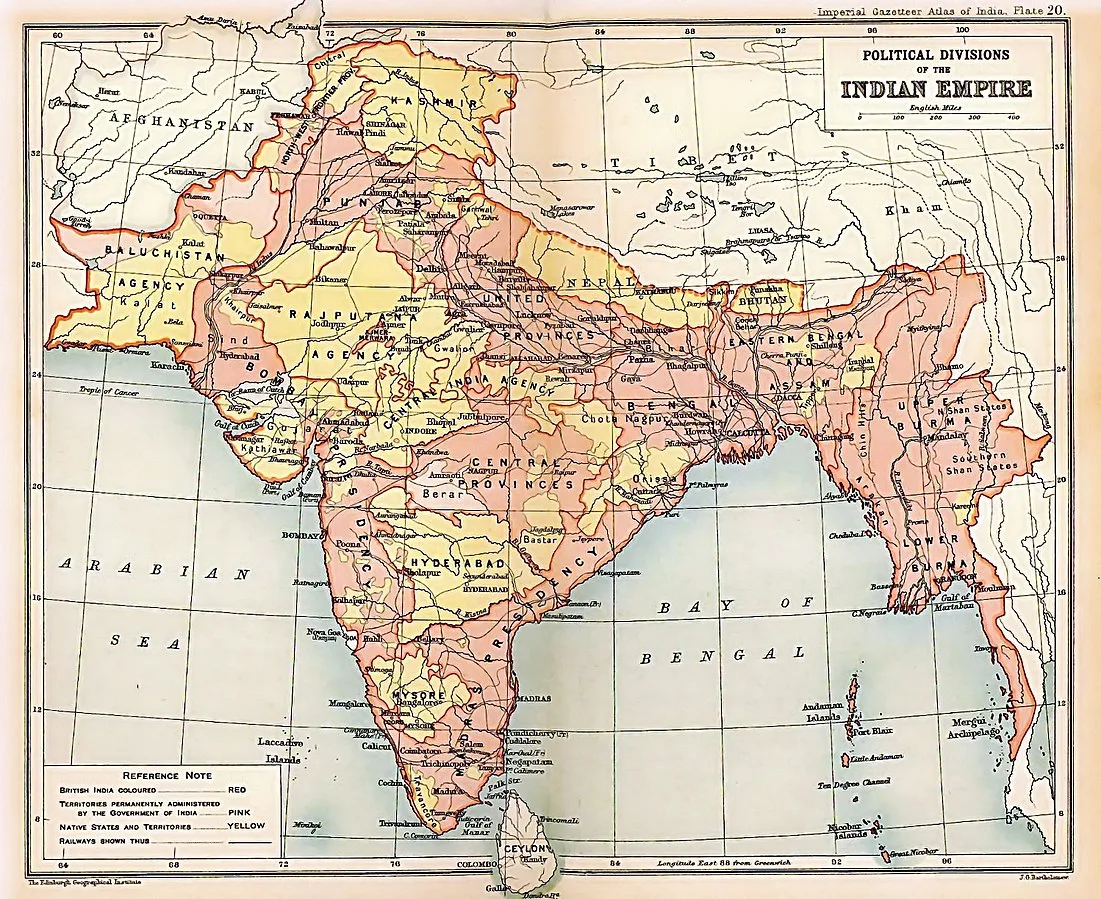
Now, let us begin to explore the history of the Sugauli treaty.
What was the map of Nepal like at that time? What was the area of Nepal? How much land did Nepal acquire, and how did it lose? All the historical details of that time are presented ahead.
At that time, or in the seventeenth century, South Asia was not in the form it is today. At that time, there was no country like today’s India. Some of its areas were called India. Different names called some areas. At that time, neither Bangladesh nor Pakistan existed separately, like today.
In that historical era, many small and big kings and kingdoms existed in many areas.
The range of the South Asian Peninsula extended to Tibet (China) in the north.
Nepal (many small Nepalese kingdoms, including Gorkha and Kathmandu) existed in the mountainous region below the Greater Himalayas. India or the British East India Company ruled countries in the south, and many other small states also existed.
East India Company came to India for commercial purposes. But gradually, the military dominance was expanding. At that time, India was weak and divided into many small and big states. Therefore, the British Empire readily expanded on different territories.
This British colonial campaign spread from Burma in the east to various parts of the Indian peninsula.
The East India Company and later ‘The British Raj’ ruled this area for over a century.
At the same time, the famous king of Nepal’s Shah dynasty, Prithvi Narayan Shah, assumed the throne of the “Gorkha” state, a powerful state of Nepal.
This is the year 1743. At that time, Nepal was not a big country like today but was divided into many small states.
The then “Gorkha” king Prithvi Narayan Shah did not like Nepalese living in such small states. Because on the north side of Nepal, there were giant Tibetan and Chinese rulers, while on the south side, the British Empire was mighty.
In such a situation, the then-king started worrying that the existence of Nepal divided into small states could end at any time.
Any imperialist power could swallow these small, fragmented Nepalese states at any time.
Therefore, King Prithvi Narayan Shah had a big dream. In which he planned to create a unified and powerful Nepal by merging all the small states of Nepal.
However, not all the kings of that time agreed with this. The mighty kings of Kantipur (Kathmandu), Doteli, Karnali, and Kirat, were especially not ready to hand over the kingdom to Prithvi Narayan Shah and accept him as the king.
Seeing this, King Prithvi Narayan thought this unification campaign was impossible through consultation and consent.
Therefore, King Prithvi Narayan Shah saw no option but war to make the Nepal unification campaign successful.
Ultimately, the king launched a series of wars in Nepal, also known as the Great Campaign for the Unification of Nepal.
Thus, the Gorkha Army started the unification war in different states through Nuwakot. Despite losing the battle with some states, he did not lose courage and continued the campaign even after regaining strength.
In this way, the armies of the then-Gorkhali king soon defeated the small states and merged them into great Nepal.
Within four decades, King Prithvi Narayan Shah and his successors annexed the eastern Kirati kingdoms, including the Kathmandu Valley, in a campaign to unify Nepal. He successfully crossed the Mechi River on the east border of Nepal.
On the other hand, the Gorkhali Empire expanded to Mahakali by unifying all the states, including Karnali in the west, into the Gorkha state.
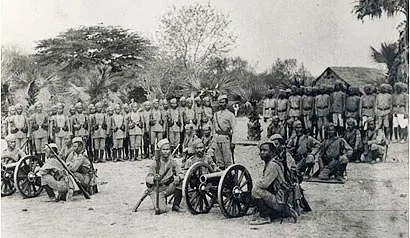
According to history, the courage of the then King of Nepal and the strength of the brave Gorkha army were so strong that the opposition army used to run away after seeing the presence of Gorkha soldiers. And that land belonged to Nepal.
Therefore, the morale of the Gorkhali army did not stop. Thus, the expedition crossed the Mahakali River on Nepal’s western border.
As a result, the Garkhali army crossed the Mahakali river in the west, won the battle in Kumaon, and captured Kumaon in 1790.
Similarly, during the Vijay campaign in 1804, Garhwal was also annexed. Despite this, their campaign did not stop, and the Gorkha army decided to move further west.
After victory in Sutlej state, the flag of Nepal was finally hoisted after reaching Kangra Fort.
After that, the Gorkha army moved towards the east, reached the Teesta rivers via Darjeeling and Sikkim of present-day India, and established the eastern border of Nepal. Along with this, Nepal was prosperous in making the world map bigger.
Similarly, parts of present-day Bihar, Bengal, and some parts of present-day Bangladesh merged into Nepal under this war.
By 1813, it was about 1500 kilometres long and extensive, from West Sutlej to East Teesta River in the historical Greater Nepal World Map.
This vast area was very different from today’s Nepal at that time. Till now, this region is known as Greater Nepal.
In this context, Nepal also has a history of waging war with Tibet and capturing a lot of land. But Nepal could not rule this land of Tibet because, after some time, the Tibetan rulers won the war and took it back.
This victory campaign by Nepal could not be digested for a long time by the then-colonial ruler of India, the British East India Company.
Seeing the victorious campaign of huge Nepal, the then-British rulers started planning to fight in Nepal by collecting weapons and measures to defeat Nepal.
EIC’s second problem was that, because of the greater Nepal, it was difficult to trade with Tibet since Nepal is now a barrier by expanding its 1500 km long northern border.
Similarly, how could the EIC get a chance by giving the beautiful mountainous land from Sikkim, Darjeeling, to Himachal?
Where there were the precious herbs and forests of the Himalayas, they had now gone to Nepal’s pocket.
Another issue was that the British always wanted to reside in a cold land of the mountain area because the heat of the terai could not be suitable for their habitation.
In addition, expanding the newly emerging Gorkha Empire in South Asia became a headache for the British since they were spreading their Empire by adding different states of India.
Therefore, ultimately, the EIC needed to break the great unity of the Nepalese.
It was also essential to take back the valuable Nepali lands like Darjeeling, Sikkim, and Kumaon, which Nepal had acquired during the war.

Due to various reasons mentioned above, the East India Company started attacking Nepal by adopting all means and even ordering the use of modern weapons.
Thus, there was a fierce territorial conflict between Nepal and the British in 1814-15, also known as the Anglo-Nepalese War in the international world.
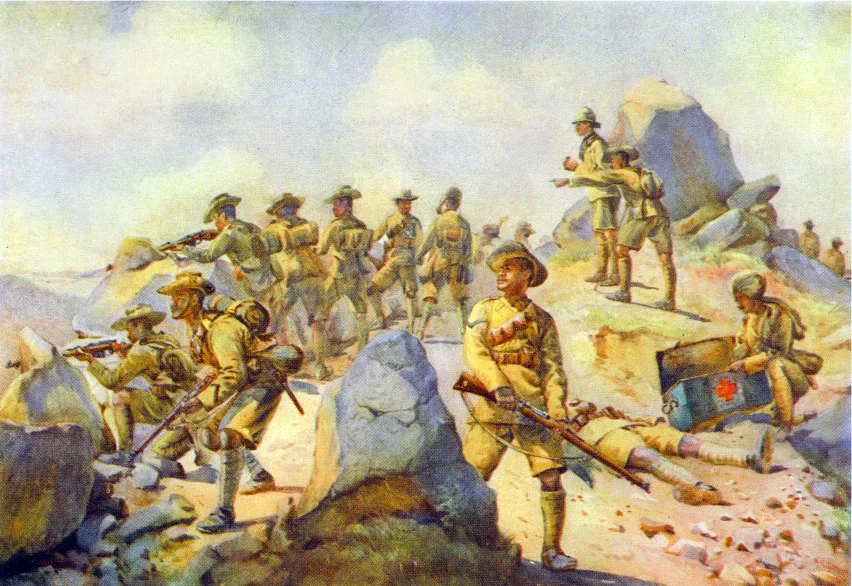
In the fierce war between Nepal and the British imperialist East India Company, equipped with modern weapons, Nepal had to compromise.
By then, Nepal was reaching a fragile state after fighting for many years. In the continuous military wars of the past, many heavy forces were killed, and many were also injured.
Along with Nepal, only Khukuri and courage were the only weapons. Nepal did not have the industry to produce the wealth of modern ammunition guns imported from abroad like ISIS.
Suffering from continuous internal and external conflict, Nepal faced the problem of strategic weapons, food, and clothing for its soldiers.
Ultimately, Nepal considered it appropriate to treaty with the British in this war.
A treaty was signed between Nepal and the East India Company, also known as the Sugauli Treaty of 1816.

According to the treaty, Nepal had to return more than 105,000 square kilometres of land occupied by Nepal to the East India Company.
At that time, Nepal had become weak due to war and hunger. That is why he agreed to return his land per the opposition’s demand.
Nepal lost important lands in this treaty, including Darjeeling, Sikkim, parts of West Bengal state in the east, Kumaon, Gadwal, Sutlej, and parts of present-day Uttaranchal and Himachal Pradesh in the west.
However, in this expansion campaign, Nepal’s rule in the conquered areas did not last very long. For example, among the present overseas states conquered by Nepal, Sikkim was ruled for 33 years.
Garhwal and Kumaon were ruled as occupied lands by Nepal for 12 years and 25 years, respectively.
However, Nepal was not able to rule this land for very long. Still, this victory and sacrifice are widely praised in the country and abroad, and the bravery and sacrifice of Gorkha soldiers are honoured. The Gorkha army fought the war with the help of simple homemade weapons like Khukuri and brought Nepal to its present state by conquering the two big superpowers of that time.
Especially the names of King Prithvi Narayan Shah, founder of Nepal unification Bahadur Shah, Prime Ministers and generals Jang Bahadur, Bir Balbhadra Kuwar, Bhimsen Thapa, Bhakti Thapa, Kalu Pandey and many other brave Gorkha elders are immortalized in Nepali history.
Nepal Nationalist Front (GNNF) is an engineering organization in Greater Nepal. Earlier, this organization was known as the “Unified Nepal National Front”.
This is a non-governmental organization headed by “Phanindra Nepal”. This organization claims that it is a common platform of Greater Nepal Engineers.
This organization demands the rejection of the Sugauli Treaty of 1816 and the Treaty of Peace and Friendship with India of 1950. The concept of this organization is that both these treaties are one-sided or have been done unfairly to Nepal.
This group is demanding the return of Nepal’s land before the Sugauli Treaty and is running a campaign.
According to this organization, Greater Nepal means the land before the Sugauli Treaty or the Sutlej River in the west, the Teesta River in the east (from Shimla to Darjeeling in the language of the organization), and the land up to Varanasi in the south.
During the campaign, the organization has run various symposiums, publications, advertisements, webpages, Facebook pages, and blog sites.
India has been Nepal’s closest neighbour for centuries. It plays a decisive role in Nepal’s geopolitical scenario. Any expansionist ambitions of Nepal can create tension in bilateral relations.
Because territorial disputes can intensify nationalistic sentiment and create tension in diplomatic relations, relations between India and Nepal are closely linked to mutual interests, historical agreements, and various aspects of trade, economic cooperation, and cultural ties.
Therefore, it is necessary to manage relations with India carefully, considering the possible consequences when raising the subject of Greater Nepal.
Due to geographical proximity and historical ties, maintaining stable diplomatic relations with India is essential for Nepal’s economic and strategic interests.
It is not that the demand and realization of Greater Nepal will not affect China also. China can make a different assessment by adopting positive and negative views.
Not only this, the Greater Nepal campaign can also result in regional imbalance with other neighbouring countries and increase interest at the international level.
Therefore, while raising this issue, campaigners for Greater Nepal will have to exercise sensitivity and prudence, considering the possible consequences for regional stability, bilateral relations, and international standards.
It is in the interest of both countries to try to find solutions to every problem of Nepal and India through open and constructive dialogue. For this, various diplomatic channels should be used, and all types of talks should be prioritized.
Making co-existence and brotherhood the basic mantra.
If you liked this article, share it and subscribe to our newsletter to read similar exciting content. And if you have any suggestions, please write to us.
Thank you for your precious time to visit this site. Happy reading. 🥰